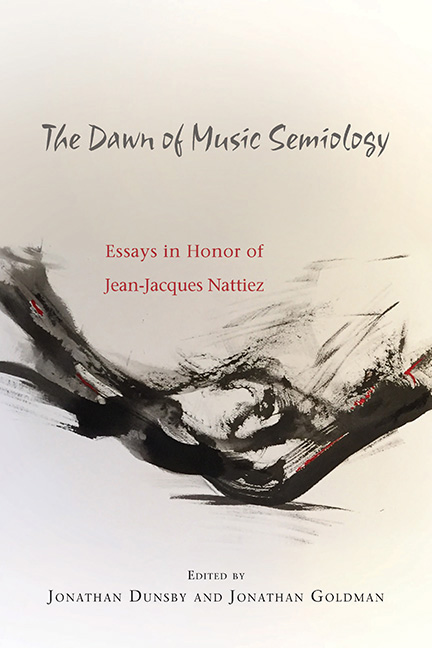Book contents
- Frontmatter
- Contents
- Foreword: About Jean-Jacques Nattiez
- Acknowledgments
- Introduction
- Part One Metaconsiderations
- Part Two Poietic Channels
- 4 From Georgian to Medieval Polyphonies: Analysis and Modeling
- 5 Schenker's Inhalt, Schenkerian Semiotics: A Preliminary Study
- 6 Music under the Sign of Modernism: From Wagner to Boulez, and Britten
- Part Three Esthesic Excursions
- Selected Bibliography of Works by Jean-Jacques Nattiez
- List of Contributors
- Index
- Tabula Gratulatoria
4 - From Georgian to Medieval Polyphonies: Analysis and Modeling
from Part Two - Poietic Channels
Published online by Cambridge University Press: 26 April 2018
- Frontmatter
- Contents
- Foreword: About Jean-Jacques Nattiez
- Acknowledgments
- Introduction
- Part One Metaconsiderations
- Part Two Poietic Channels
- 4 From Georgian to Medieval Polyphonies: Analysis and Modeling
- 5 Schenker's Inhalt, Schenkerian Semiotics: A Preliminary Study
- 6 Music under the Sign of Modernism: From Wagner to Boulez, and Britten
- Part Three Esthesic Excursions
- Selected Bibliography of Works by Jean-Jacques Nattiez
- List of Contributors
- Index
- Tabula Gratulatoria
Summary
It was in June 1990, at a conference in Tbilisi, that I discovered Georgian polyphony. Its beauty, singularity, and complexity immediately fascinated me. Its dissonances, the abruptness of its “modulations” with no preparation, and its archaic nature, strongly evoked both western medieval music and the polyphony of the Pygmies of Central Africa that I had already been studying for some twenty years at that point.
General Characteristics and Situation
Georgian polyphony constitutes a unique musical heritage that is renowned for its beauty and its complexity. It includes a vast body of religious chants and folk songs which are mostly in three parts, with “harmonic” sequences that are unequalled in the world of oral-tradition singing.
Because the three parts may be rhythmically independent, their progression can lead to dense counterpoint within which, according to our definitions of western music, there are many “dissonances.” Uninformed listeners may have the impression that it follows no rules. But that is certainly not the case. It was indeed the particularities of the “harmonic” organization of this heritage which intrigued me.
Georgian music is modal and involves improvisation:
The ability of improvisation and having many variations which is a common phenomenon for a folk song have become a special characteristic feature of the music of Georgia. It is the very quality that explains the particular significance of a trio-ensemble in a Gurian song where the performers of all the three voices have an equal chance to embroider the fabric of the song according to their free will and ability.
The singer's skill is not defined by the original turns of the voice and refined ornamentation only. It is, first of all, the mutual feeling of the partners, the development of one's own voice in regard to theirs, in the flair of achieving common harmony or the skill of singing together.
Georgian polyphony has the following characteristics, which represent its specific traits:
• Drone polyphony
• Strict homorhythm, sometimes with parallel, oblique or contrary Movement
• Partially homorhythmic songs
• Homorhythmic songs with added ornamentation
• Counterpoint, that is, rhythmic independence of the parts
- Type
- Chapter
- Information
- The Dawn of Music SemiologyEssays in Honor of Jean-Jacques Nattiez, pp. 59 - 80Publisher: Boydell & BrewerPrint publication year: 2017



